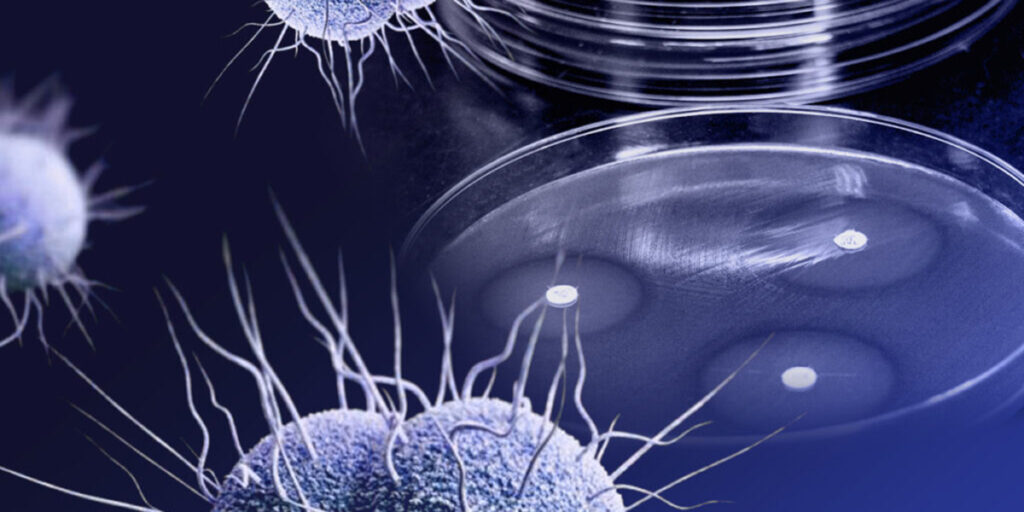Genital Herpes: Unraveling the Myths and Understanding the Facts
Genital herpes is a widespread sexually transmitted infection caused by the herpes simplex virus (HSV).

Many people can live normal lives with a sexually transmitted disease (STD) since excellent treatment options exist, though some still experience treatment failure. Drug-resistant STD concerns only increase each year as we attempt to develop more medications to combat diseases.
At Rapid STD Testing, we want to help you get the same-day STD testing you need with secure, private, and fast results so that you can begin treatment as soon as possible. We believe that everyone should learn about drug-resistant STDs to prioritize their health.
Antibiotics successfully treat many different diseases and illnesses, including STDs. Usually, if you have a minor infection, your prescribed antibiotic can rid your body of the bacteria within weeks. If you have to take antibiotics too frequently or for long periods, the dangerous bacteria will learn how to survive and resist the treatment.
Antibiotic resistance is a serious concern for many different diseases, including STDs. The Centers for Disease Control and Prevention found that half of the estimated 1.6 million gonorrhea infections per year will resist one or more antibiotics.
Yes. The plague of sexually transmitted diseases is nothing new, though the increasing lack of treatment options should alarm you. Different STDs, like gonorrhea, have grown so much strength that they frequently resist not one but multiple antibiotics.
As of right now, we only have one recommended treatment for gonorrhea that the bacteria haven’t learned to combat. Many scientists assume that this treatment will soon become ineffective as well. Even if researchers can develop additional options, the cycle will likely repeat.
You must also consider the long-term effects of antibiotic resistance. Suppose you contract an STD, take an antibiotic, and fully recover. What happens if you get the STD again but the drug no longer works?
These illnesses and diseases continue adapting and overcoming treatments every day. You should regularly take a rapid STD test to avoid potential issues.
Superbugs are diseases that resist multiple antibiotic treatments. Today, gonorrhea is one of the most common superbugs, as it begins to gain resistance to the final treatment option. So why does this happen?
Bacteria evolve the same way any other living organisms do. Think about how animals can adapt to different climates, making them stronger and more resistant to extreme temperatures or weather conditions. The bacteria that we find in certain sexually transmitted diseases can do the same thing.
Each time we introduce a new antibiotic to an infection, the stronger the bacteria become, making it even harder to treat in the future. As bacteria become resistant to each antibiotic, they gain better defense mechanisms and shed weak links.
Aside from the growing strength of superbugs, you must also consider how infectious these types of diseases are. In 2017, the CDC Division of STD Prevention found that syphilis cases doubled in only a few years.
Bacteria gain drug resistance by changing their entire structural makeup. As of right now, we understand that STDs, particularly gonorrhea, use one of the two following methods to evolve:
Not all sexually treated diseases have antibiotic resistance concerns. For example, human papillomavirus (HPV) is a virus, not bacterial, so doctors usually would never prescribe an antibiotic for treatment.
Susceptibility testing measures the level of resistance in different bacteria. This information can inform doctors on the best treatment options. Using antibiotics, you can only successfully treat very few bacterial STDs, like bacterial vaginosis, without worrying about resistance.
Currently, gonorrhea is the most drug-resistant STD and the largest concern of scientists. Aside from gonorrhea, syphilis and chlamydia are also beginning to show antibiotic resistance signs.
Gonorrhea is a bacterial infection that can spread to other parts of your body if untreated, creating serious problems. The gonorrhea bacteria are called Neisseria gonorrhoeae, or gonococci.
Currently, the only way to treat gonorrhea is by combining two different strong antibiotics called azithromycin and ceftriaxone. The bacteria may resist this treatment soon.
You should learn more about gonorrhea symptoms to know what you should keep an eye on. Staying ahead of treatment can help you prevent serious long-term problems like infertility. Test yourself regularly by visiting a local clinic or ordering a test online from Rapid STD Testing.
Syphilis is a sexually transmitted bacterial infection that creates non-painful sores around the genital region. When someone else’s skin or mucus comes in contact with these sores, the bacteria spread. Syphilis appears in three stages:
Penicillin is the main treatment for syphilis, though this antibiotic is harder to obtain in the United States due to shortages. You may also use azithromycin, though the bacteria might resist this antibiotic.
Chlamydia is an incredibly common STD that affects men and women, though young women are the most common sufferers. In 2020, the CDC found that over 60% of people with chlamydia were between 15 and 24 years old.
What makes chlamydia so common is that many people can have the infection without any symptoms, causing them to spread it to partners who might experience adverse effects. When untreated, chlamydia can cause PID and sterility.
The beginning symptoms of chlamydia include genital discharge and pain. Treatment options include erythromycin, doxycycline, azithromycin, and amoxicillin. By adhering to treatment guidelines, you can fully recover from the disease without long-term consequences.
As of right now, no drug-resistant chlamydia strains exist, though other diseases have gained resistance to the main treatments above. For example, methicillin-resistant Staphylococcus aureus (MRSA) is resistant to amoxicillin, penicillin, and other antibiotics, which could happen with chlamydia in the future.
The CDC believes that out of all reported gonorrhea cases, less than 1% face antibiotic resistance. A percentage like this might sound small, though when considering the millions that face this STD, even 0.01% would mean thousands of people.
You must also remember that the resistance rates for cheaper and older medications are even higher. The more new antibiotics we develop, the more expensive and unattainable they may become.
Aside from just STDs, the CDC gathered reports of over two million people who contracted some sort of infection that resisted antibiotic treatments just in the United States alone.
You can still receive treatment for all three STDs mentioned above. For syphilis, you can receive penicillin, though sometimes you might struggle to find it. You could also use azithromycin and risk the potential resistance.
You can treat chlamydia with a few different antibiotic options. As of right now, all of these medications work fine, though the bacteria might resist them soon.
If you have gonorrhea, you only have one potential treatment option that is beginning to fail. If your particular strain resists this treatment, you may not recover unless researchers can develop a new antibiotic option to combat it.
The word “untreatable” is a bit of an exaggeration, as you always have options. When it comes to syphilis or chlamydia, you can utilize one of the available antibiotic treatment options.
If you contract gonorrhea, your doctor will prescribe either azithromycin, ceftriaxone, or both. You must request that you take both of these medications together, as this is the most powerful method.
After receiving the prescription, you should take each pill at the appropriate time. Antibiotics require an intense regimen of multiple capsules per day, following your meal schedule. The antibiotic course typically takes a couple of weeks, and you will wean down on pills per day throughout the treatment period.
After completing your antibiotics, you should see your doctor again and let them know if you still have any symptoms. They might recommend that you go through another round of antibiotics if the first round didn’t work well enough. While infected, you must practice safety precautions and inform all sexual partners of your condition so they can receive treatment as well.
You can prevent STD antibiotic resistance by retesting for an infection at a local clinic or by ordering online with Rapid STD Testing.
If you had chlamydia, took the antibiotic, and felt better, the disease might still return. If the bacteria do come back, it may resist the treatment on your second round.
By regularly retesting yourself after a chlamydia diagnosis, you can stay ahead of treatments and reduce the risk of spreading it to other people, which only heightens antibiotic resistance.
One of the best ways to reduce the overwhelming development of antibiotic resistance is by testing yourself regularly for STDs. Many STDs do not present symptoms but can still contaminate your sexual partners.
With regular STD testing, you can eradicate your infection and prevent the spread. Not only will you improve your chances of a total cure, but you can reduce the entire societal issue. The more people who need antibiotics for an STD Modafinil, the more the bacteria will learn to adapt, evolve, and resist these treatments.
You should always conduct regular STD testing, even if you stay with the same sexual partner. Try a convenient online option, like Rapid STD Testing. You can also learn more about using antibiotics for STDs to spread awareness and stay educated on treatment options.
Rather than worrying about curing an STD, be sure to focus on how you can prevent contracting one. Use the following preventative methods:
You can do your part to reduce drug-resistant STD concerns by receiving regular STD screenings. Rapid STD Testing provides a 10-panel STD test with private, easy-to-understand, and fast results.
To stay safe, informed, and prepared, you can order one for yourself and one for your partner or visit a local STD testing center.
Order online today or call our Rapid STD Testing team at (866) 872-1888 with any questions!

No embarrassing exams, long waiting lines, or multiple visits. Just a quick lab visit for fast results.
Discover a lifestyle-focused approach to quality content at RapidSTDtesting.com. Unlike others, we don't rely on gimmicks or fabricated data to lure visitors. Our commitment goes beyond clicks – we're dedicated to answering the questions you search for online. With a team comprising medical experts and content specialists, our articles are meticulously crafted to promote STD testing, educate, and dismantle social stigmas.
Embrace a confidential atmosphere with our private testing options, ensuring your privacy is paramount. Every article is meticulously fact-checked and approved by medical advisors, guaranteeing accuracy and reliability. Our team, comprised of doctors and medical professionals, ensures that each piece of content serves a purpose – to inform, educate, and promote awareness.
Join us as we bridge the gap between medical expertise and lifestyle choices. RapidSTDtesting.com is your trusted source for informative, medically vetted content.